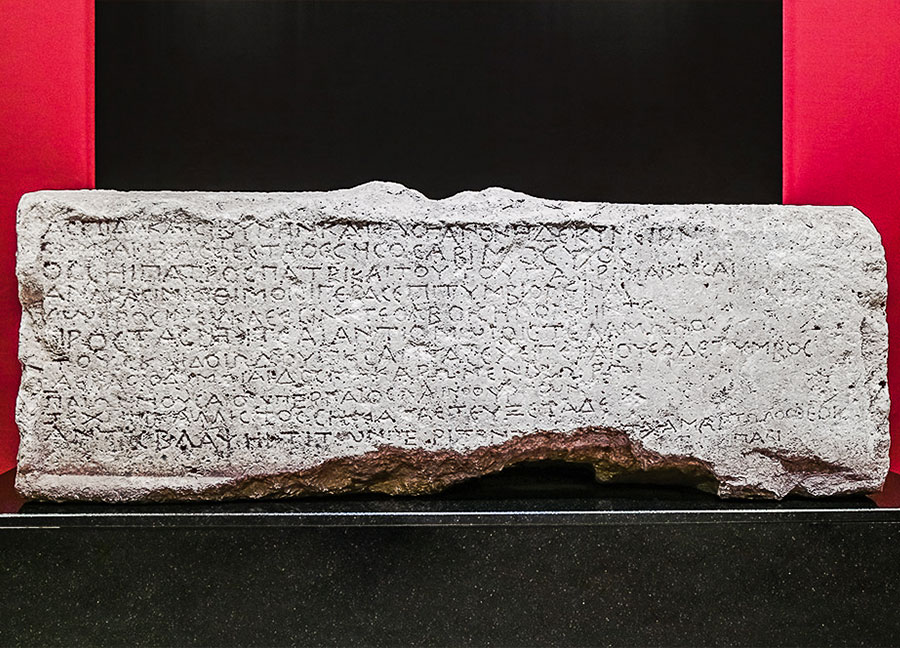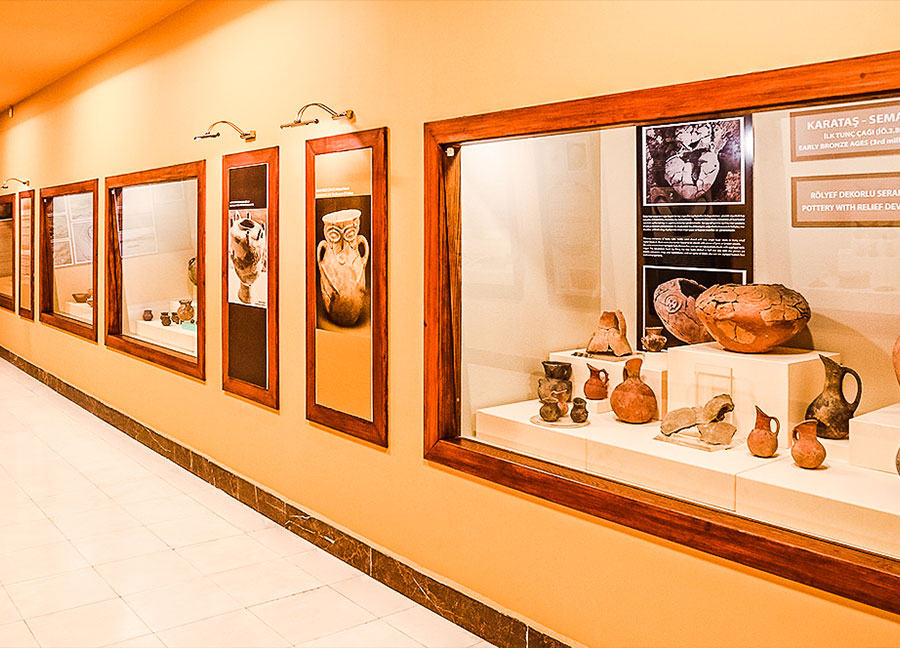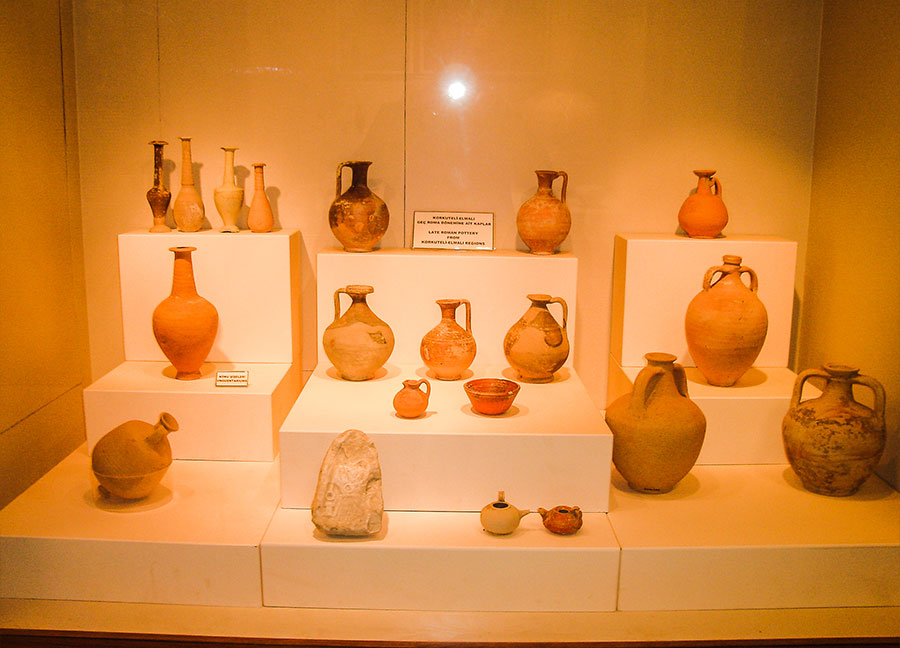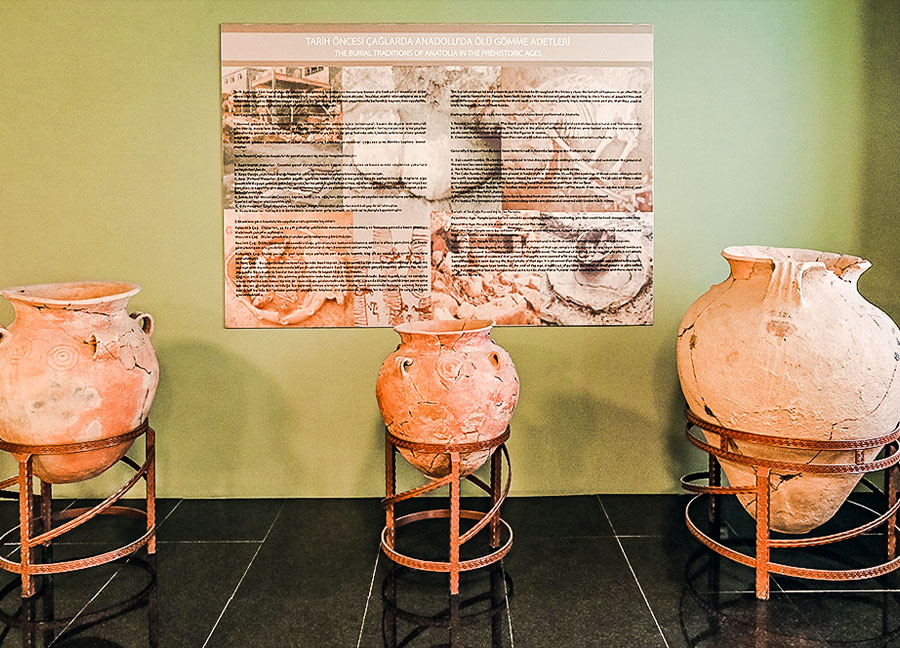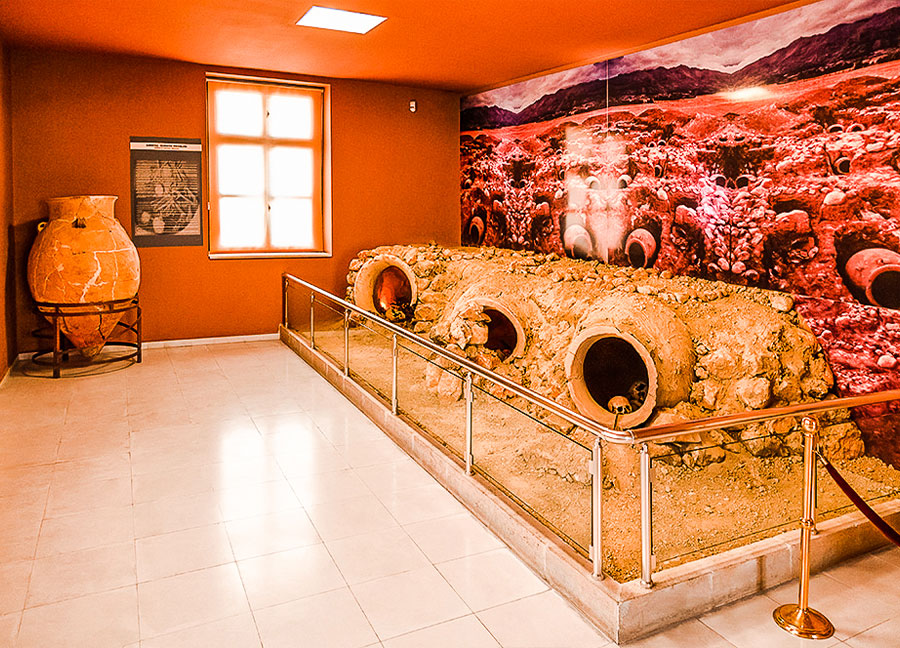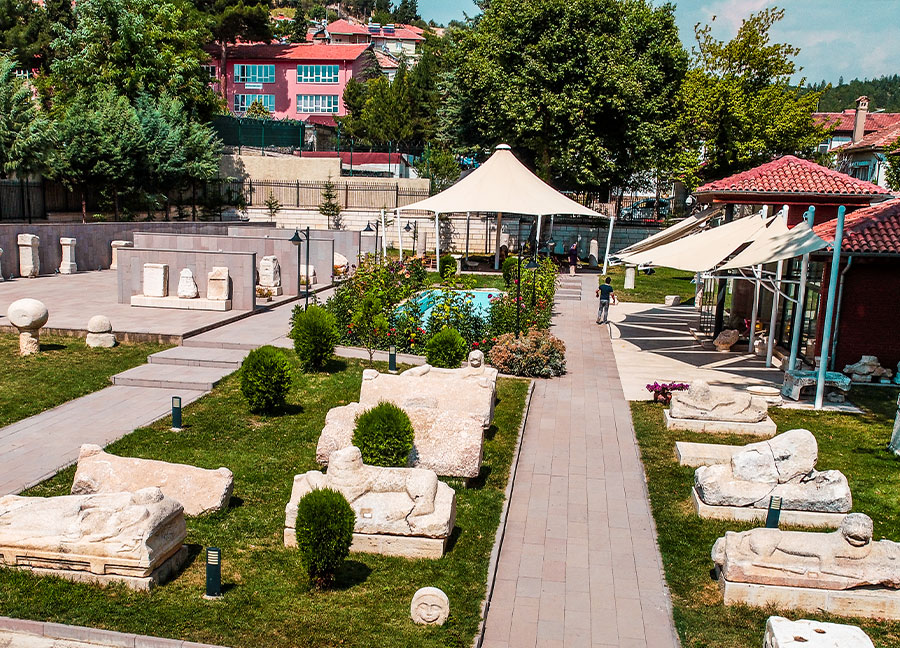Elmalı Museum should be seen by everyone who visits Elmali. The settlement of many different civilizations from the past to the present, to discover the historical value and importance of the region, was established by the restoration of the two-storey Old Government House of the district and opened to visitors on 13 June 2011.
In the museum, which has eight exhibition halls in a closed area of 2400 m2, there are many archaeological artifacts and finds that reveal the historical richness of the region. Bağbaşı artifacts from the late Chalcolithic period, the first bronze period artifacts of Karataş Semahöyük, artifacts unearthed in the Hacımusalar Tumulus and Karaçakır excavations, finds from excavations such as the Karaburun, Kızılbel and Bayındır Tumulus, tombs from the Late Chalcolithic Period and the Early Bronze Age. and examples from storage vessels, Lycian City Coins, Roman Imperial Coins, BC. Imitation samples from the 5th century Elmalı Treasure, jewelry from the Roman and Byzantine Periods found around the district, items from daily life, votive steles, sarcophagi and sculpture fragments are among the most important artifacts exhibited in the museum. In halls 4 and 8 on the 1st floor of the museum, there are colourful paintings of the walls of the Kızılbel and Karaburun burial chambers, which were reconstructed in their original dimensions.
The 4000m2 garden of the museum is arranged as an open display area. Here, tomb stelae, sarcophagi, altars, column fragments and architectural elements belonging to the Hellenistic, Roman and Byzantine Periods are exhibited. The basement of the museum is reserved for artifact storage.


